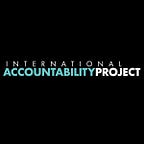In the Philippines,
Build a People’s Plan
By Jessica Amon
Jessica Amon is an organiser at the Community Organizers Multiversity (COM) in Manila, Philippines. She is a member of the Global Advocacy Team, an 8-person group convened by the International Accountability Project, to conduct local research on development and make recommendations to improve World Bank policy on development finance. The Global Advocacy Team’s final report from 8 countries will be released in 2015.
When you think of experts to help design, plan and execute big, infrastructure plans to prevent flooding, do informal settlers come to mind? In Manila, they might. Through ‘People’s Plans’, communities in Metro Manila are demanding their recommendations and designs be taken seriously in the planning of development projects. The People’s Plans demonstrate the centrality of local expertise and knowledge in the process of mapping out development priorities.
After the devastation wrought by Typhoon Ondoy in 2009, the Philippines government began studying flood risks in Manila. With assistance from the World Bank, it compiled the “Flood Management Master Plan”; calling for the development of eleven infrastructure projects in the Laguna de Bay region. The projects include the construction of an expressway, a mega-dike, dredging works and improvements to urban drainage systems. But it also involves the eviction of hundreds of thousands of informal settlers. The government has reportedly informed the World Bank and other donors that consultations are taking place with those affected. Yet our research suggests a different story. The national and local governments have not held consultations. This has created a great deal of confusion and questions about what to expect.
My colleagues and I at Community Organizers Multiversity (COM) have been working in the Laguna de Bay area since 2001 with fisherfolk and urban poor communities. We conducted surveys in seven communities, to understand how people will be affected by flood management projects and whether they have a voice in the process. We used the survey as an awareness-raising tool — as a process to encourage people to think about how displacement will affect them and whether it can help them meet their development goals.
Based on the data we gathered, we learned that people have proactively started discussing what will happen to them and to generate their own “People’s Plan” to collect citizen-generated proposals for flood control. This is happening even though the government has not consulted them.
To quote Bella de la Rosa, one of the women interviewed,
“We understand the need to have our own plan and solutions to the issues confronting our community. Through the People’s Plan, we established a vision for developing into a flood-free and sustainable community. It is based on the idea that real solutions for [re]settlement, basic services, and other issues should always comes first from the people. It includes lessons we have learned about flood measures, evacuation plans, zero casualty, and mitigation concepts for disaster risk management. We have benefited from the help of technical people, like engineers and geologists, who have assisted us in making our plan technically sound. Our community is also undergoing training on technical and financial capabilities.”
The Philippines government’s flood control projects are clearly in the public interest — if built carefully, they will help to prevent future damage from floods and typhoons. The communities I work with do not question the value of a stronger flood management control program.
We simply would like the government to recognise that we are experts in this process too
both as people who are vulnerable to flooding, as well as people who will bear the costs if we are forced to leave our homes. In large public infrastructure projects, success depends on participation with local communities.
Our experience facilitating the People’s Plan process shows that it is not overly complicated, nor unreasonably expensive to conduct development planning in a truly participatory manner. In one community, preparation took two months and cost only $1,000 USD to complete. With this, we have been able to engage hundreds of people and create a plan with ideas that the government could never come up with on its own. The participatory nature of the process builds a strong sense of ownership among local people for the plan that emerges.
Since learning more about the proposed flood control plans, the communities that participated in our survey have now also started to make their own People’s Plan. We believe that the People’s Plan can be mainstreamed in the Philippines and replicated throughout Laguna de Bay communities. For those communities that will be relocated, we hope that the government will treat this as an opportunity to support the communities’ own development aspirations. We strongly believe that resettlement should only take place as a last resort, and that any relocation that does occur should be in-city.
What we are asking for is a meaningful conversation with the government, in which the government recognises that local people are also experts. Our People’s Plan demonstrates that we have vital perspectives and ideas to contribute to creating true development solutions. We hope that the coming development around Laguna de Bay will ensure that the communities are safe and resilient from any form of disaster, be it natural or man made.
